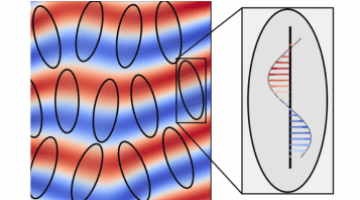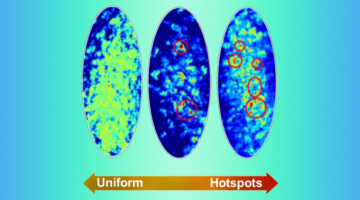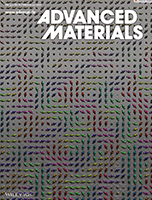During a series of experiments at the ALS, researchers identified helical magnetic spins that fluctuate at different time scales during a phase transition as a function of temperature in a nematic iron germanium thin film. The results provide a framework for characterizing exotic phases, which may have interesting optical and transport properties for microelectronics and spintronics. Read more »![]()
![]()
Fluctuations Mark Phase Changes in Magnetic Films
Researchers discovered that nanoscale spin fluctuations deep inside ordered states of a magnetic film can characterize phase transitions, independent of underlying magnetic interactions. The results provide a new way to predict and understand phase transitions in materials relevant to high-density, energy-efficient microelectronics. Read more »![]()
![]()
EPSCoR Collaboration Fosters New Research and New Careers
The DOE Established Program to Stimulate Competitive Research (DOE EPSCoR) encourages partnerships between national labs and researchers in qualifying states and territories. An EPSCoR collaboration with researchers from Kentucky has resulted in an ALS highlight, career advancement for young scientists, and a larger, center-scale proposal. Read more »
Artificial Spin Ice Toggles Twist in X-Ray Beams on Demand
ALS studies helped scientists understand how a nanoscale magnetic lattice (an artificial spin ice) acts as a toggle switch for x-ray beams with spiral character. The findings represent an important step toward the development of a versatile new tool for probing or controlling exotic phenomena in electronic and magnetic systems. Read more »![]()
![]()
Chiral Spin Textures in Amorphous Iron–Germanium Thick Films
Robert Streubel and co‐workers report the formation of topological magnetization vector fields in disordered materials with local inversion symmetry breaking, harnessing high‐resolution Lorentz microscopy, quantitative x‐ray microspectroscopy, and coherent scattering. The image shows the reconstructed in‐plane magnetic induction of closely packed Bloch skyrmions embedded into helical spins. Read more »
A Crackling Analysis of Stripe and Skyrmion Phases
Through statistical analysis of “crackling” (a system’s jerky response to slowly changing conditions), researchers demonstrated fundamental differences between skyrmion and stripe phases in a layered heterostructure. The method has broad applicability to many complex materials of interest for emerging information technologies. Read more »
Skyrmion Behavior Revealed by Two X-Ray Studies
Two research groups have recently published separate studies in which soft x-rays reveal how skyrmions—quasiparticles made up of spin vortices—react to external fields. Their work lays the foundation for understanding these fascinating constructs and eventually utilizing them in spintronic applications. Read more »![]()
![]()





